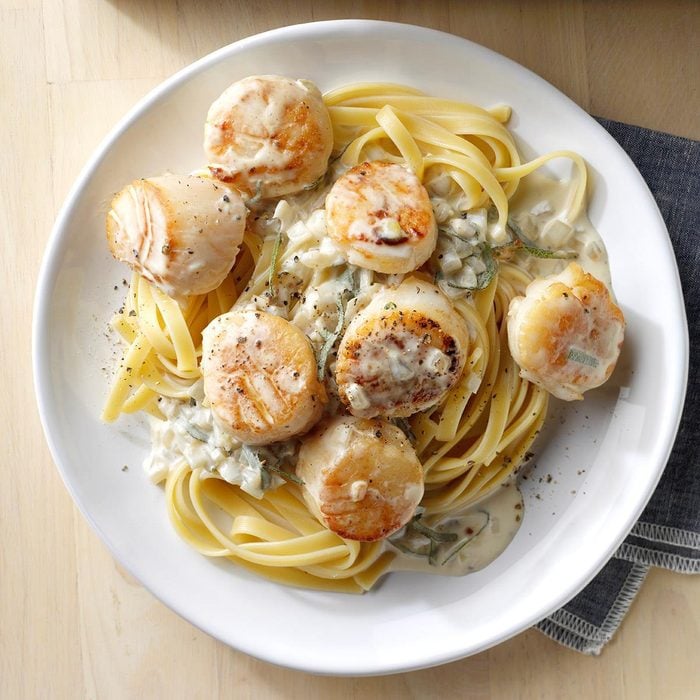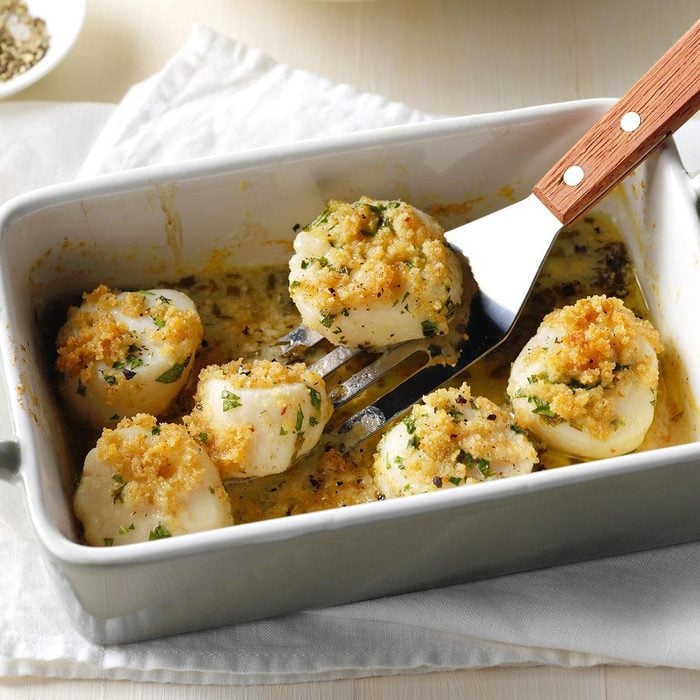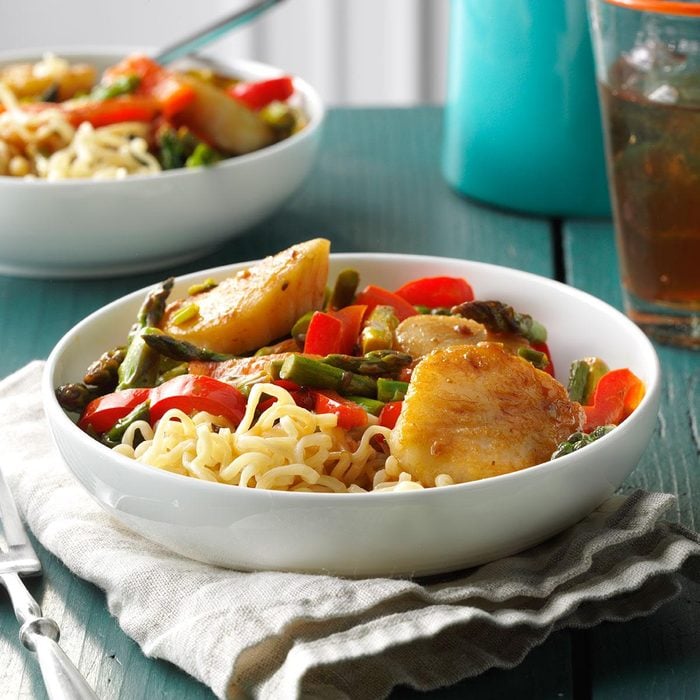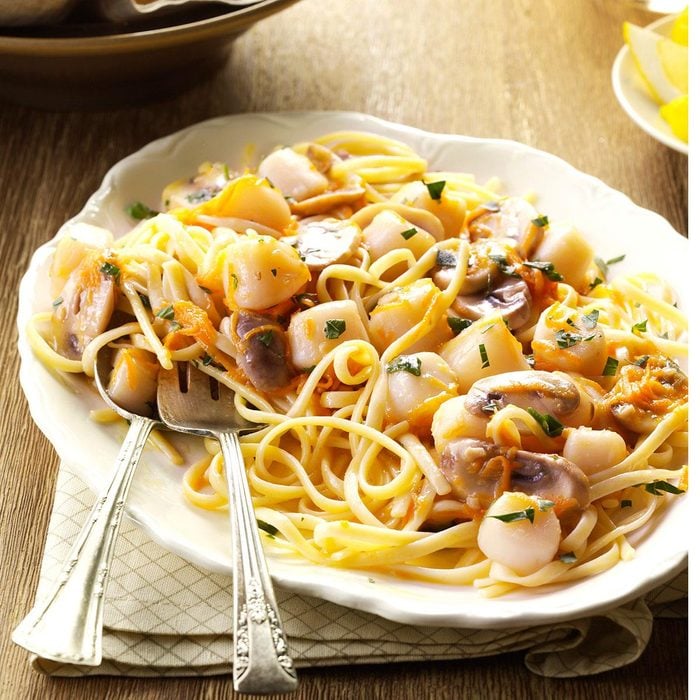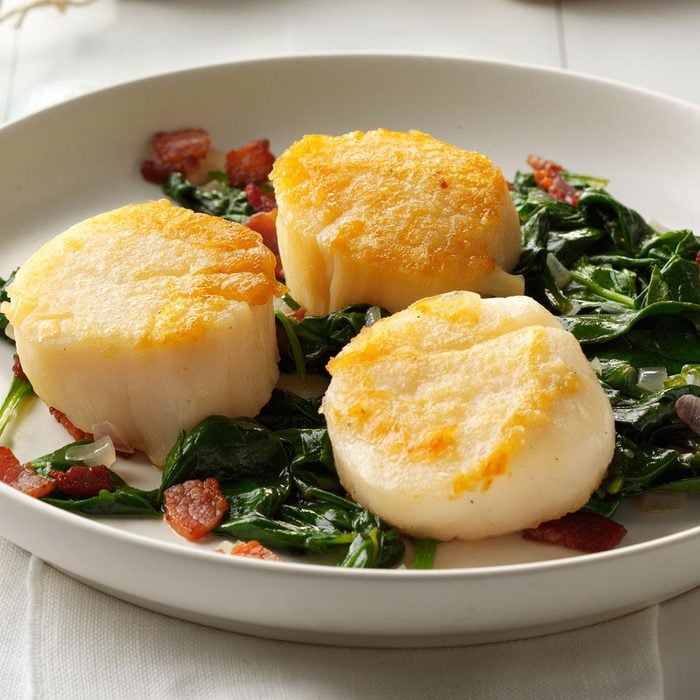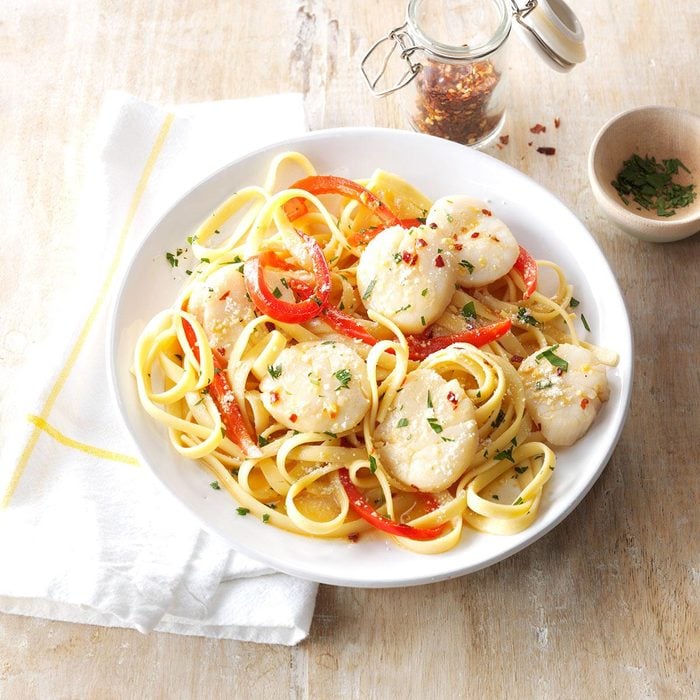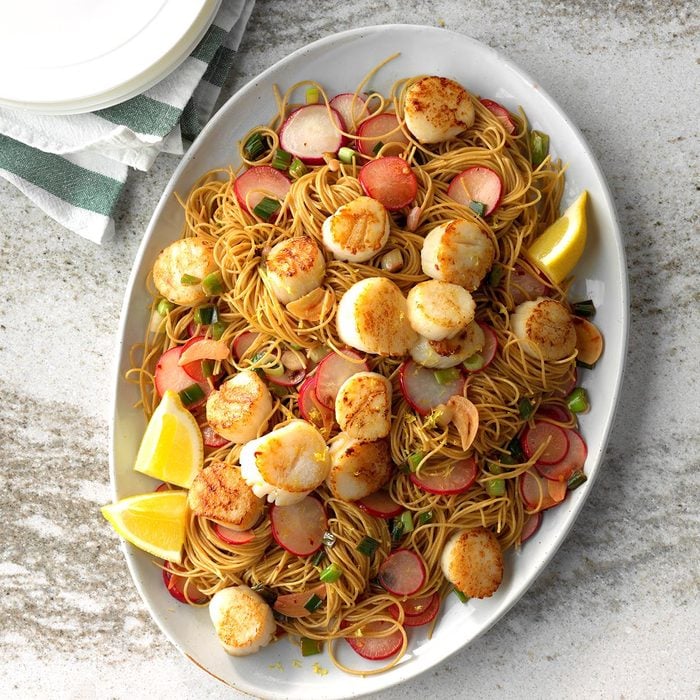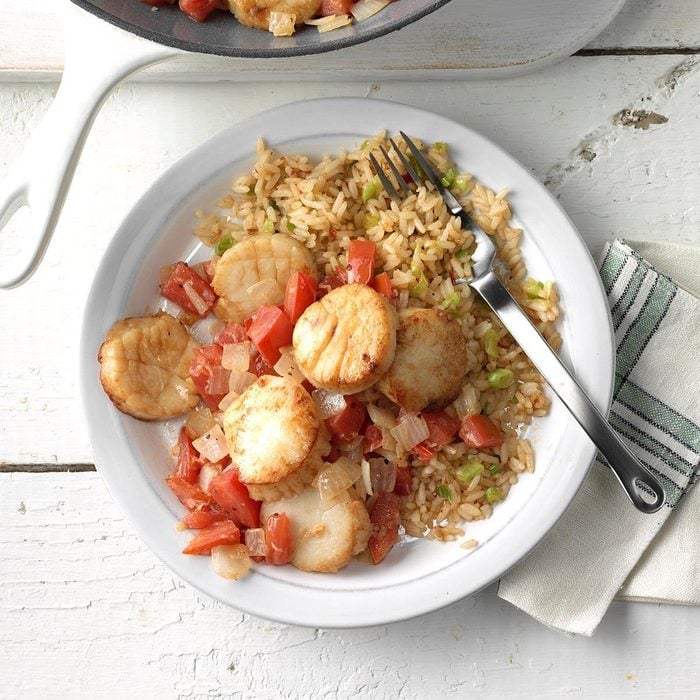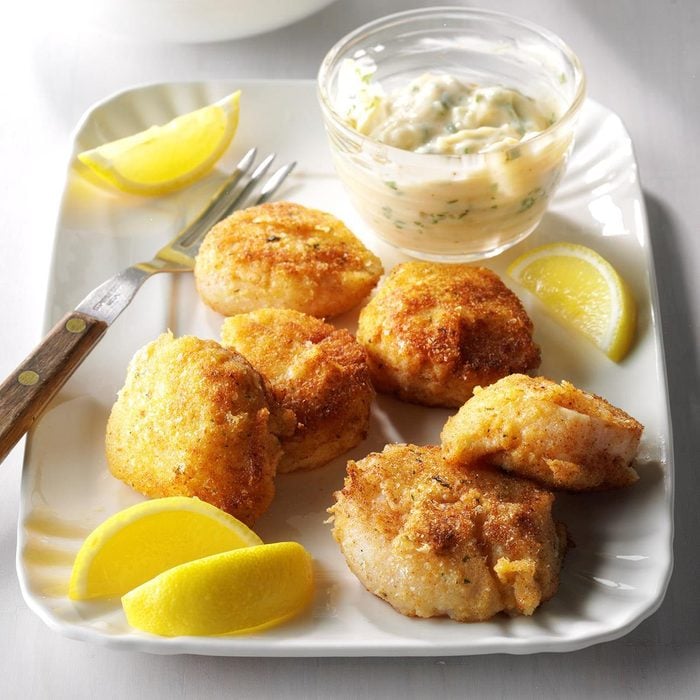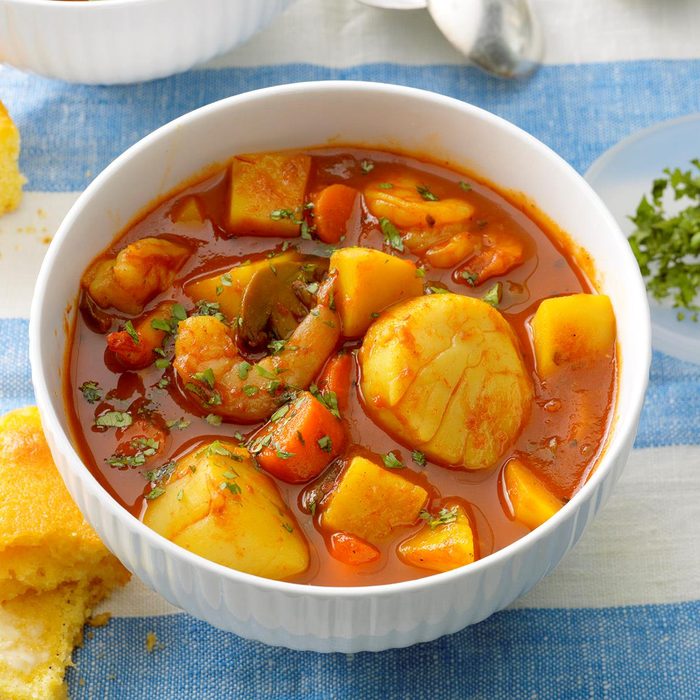Scallops—you’ve probably seen them on restaurant menus that boast succulent seafood options. If you’re a seafood lover, chances are you ordered the scallops. If you’re not a huge seafood fan, you probably avoided the dish (we promise, they’re way more approachable than you’d think!). Either way, we’re here to answer what you really want to know: What are scallops, exactly?
What Are Sea Scallops?
Sea scallops are a type of bivalve mollusk that are in the same family as mussels, oysters and octopus. The scallop itself is the meaty part of the mollusk; that’s what you’ll see on your dinner plate. It is located between two shells (much like a clam), which open and close by the movements of the scallop. It’s essentially like one big muscle. They are usually pink or off-white and live in the colder waters of the ocean floor.
You’ll see some scallops labeled as diver scallops. This means the scallops have been sustainably harvested by hand—scuba divers dove for them versus a boat that trawled and scraped the ocean floor.
While sea scallops might be the most recognizable on a plate in a high-end seafood restaurant, smaller bay scallops also exist. They look more like large pearls than medallions of meat and they’re often more tender.
Wet Vs. Dry Scallops
“Wet” and “dry” scallops don’t refer to a type of scallop or its preparation for a meal, but rather how the scallop has been preserved post harvest. This distinction is important to know if you’re shopping for scallops at your local grocery store.
Wet scallops will have a plump, glossy look. They are more plump looking because they retain more water from the artificial preservatives used after harvesting. The preservatives result in rubbery scallops that are difficult to sear (the most tantalizing part of cooked scallops!).
Dry scallops are the key to briny, sweet, perfectly-seared scallop dishes. Preserved through shucking, cleaning and flash freezing nearly right after being caught, dry scallops are able to retain their natural moisture. They won’t look as plump and shiny as wet scallops, but they’ll taste way better. You can also order them frozen from seafood companies that practice sustainable fishing. Purchasing frozen dry scallops means they’ll remain at peak freshness until you’re ready to cook them.
How to Cook Scallops
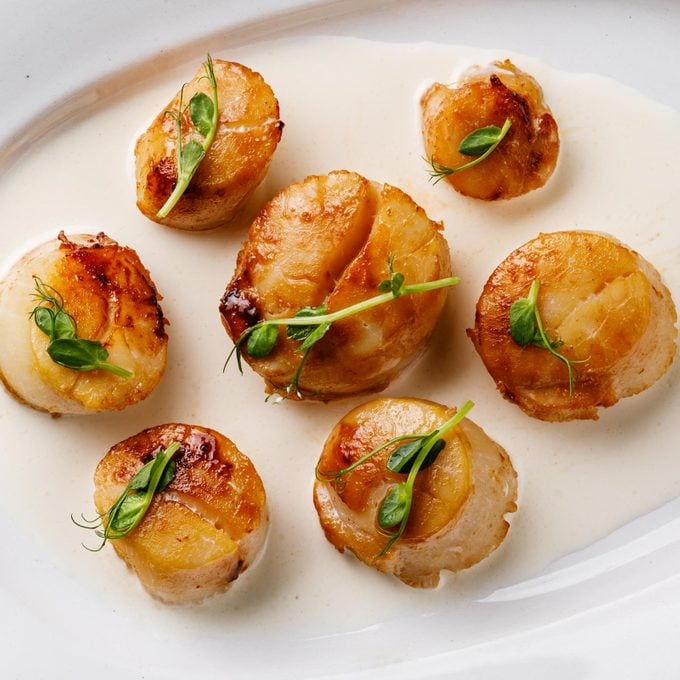 Lisovskaya/getty images
Lisovskaya/getty images
You’ll want to cook wet scallops and dry scallops differently. For that beautifully recognizable caramelized texture, searing dry scallops is the way to go. Pat out the excess moisture before pan searing. Taking out the moisture will give you the golden, crispy-topped scallops you thought you’d only get at a fancy seafood restaurant.
Use wet scallops in recipes that don’t call for a seared texture. Wet scallops are better used in baked recipes, like a seafood lasagna.
What Do Scallops Taste Like?
Averse to the smell of seafood? Then you’re in luck when it comes to scallops. Ocean-y, slimy, fishy scents are nowhere to be detected when it comes to this delicate meat. Scallops are salty and sweet, light in texture, and almost buttery when you bite into them. A good scallop will be rich and barely need any accoutrements to bring out its flavor.
Excited to cook this delicious shellfish at home? These are the scallop recipes we cannot get enough of.
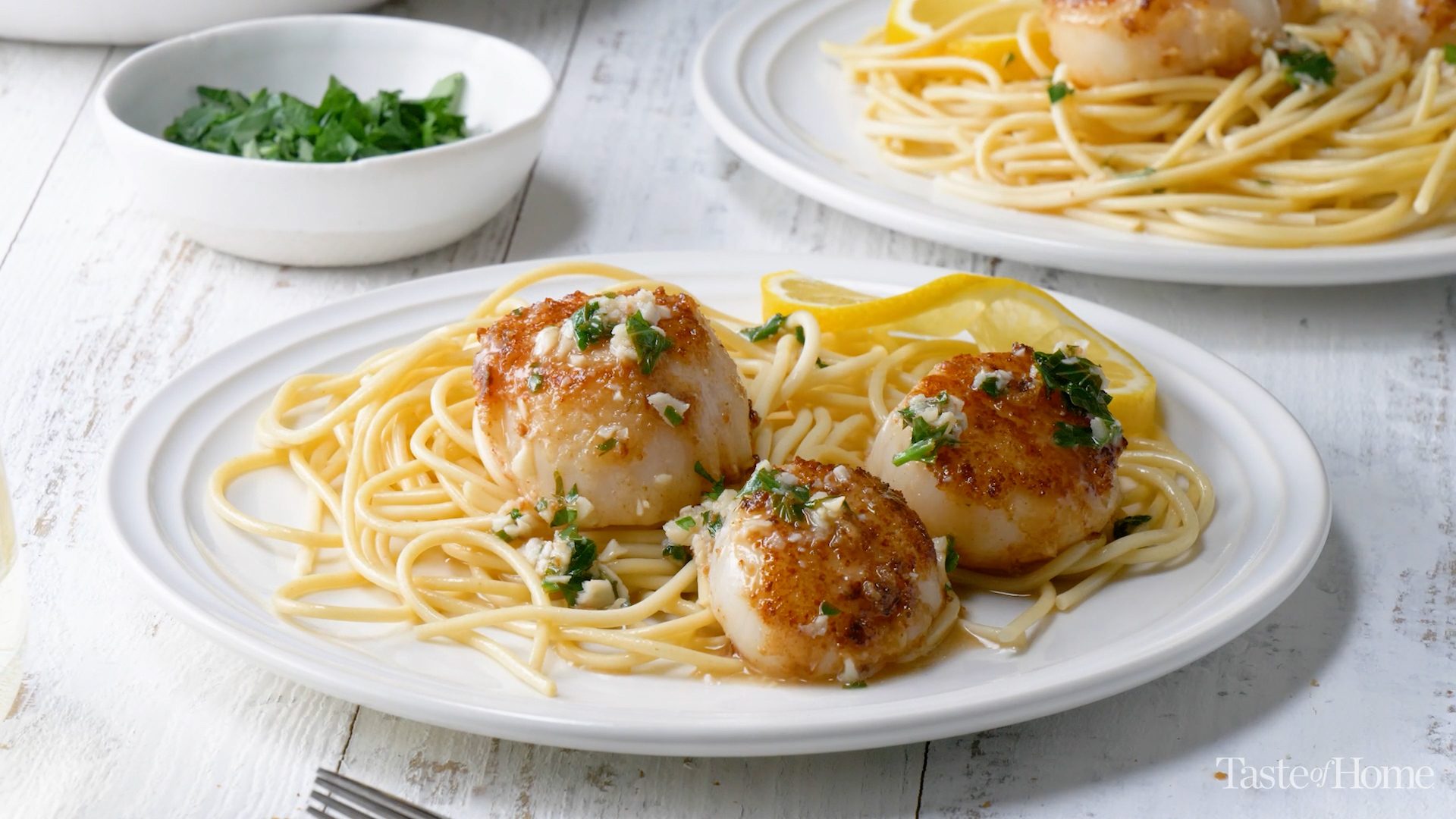 Skillet Sea Scallops
Skillet Sea Scallops
You'll want to slip this
scallop recipe into the front of your last-minute guests file. Pasta and mixed greens nicely complement the tender, citrusy shellfish. —Margaret E. Lowenberg, Kingman, Arizona
Go to Recipe
Scallops in Sage CreamI wanted to show off the ocean freshness of the scallops I bought on the dock from a local fisherman, so I used basic ingredients to showcase them. With sage and shallots, this is the best cream sauce for scallops I've found. —Joan Churchill, Dover, New Hampshire
Simple Herbed ScallopsLiving in Kansas, fresh seafood can be hard to come by. Luckily, frozen scallops aren't. This dish offers coastal flavor to those of us in the Midwest. —Sarah Befort, Hays, Kansas
Sauteed Scallops & Shrimp PastaI created this tempting pasta and scallop recipe for my wife. It’s a terrific meal served with crusty sourdough. If you don't like spice, skip the red pepper flakes. —George Levinthal, Goleta, California
Seared Scallops with Citrus Herb SauceBe sure to pat the scallops with a paper towel to remove any excess moisture. This helps create that perfectly browned and flavorful scallop your better half will love. —April Lane, Greeneville, Tennessee
Stir-Fried Scallops and AsparagusServed over quick-cooking ramen noodles, this stir-fry is perfect for busy families on hurried weeknights. Not only do we love the taste, but it comes together in about half an hour. —Barbara Schindler, Napoleon, Ohio
Scallops with LinguineA buttery garlic sauce zips up a bowlful of linguine, bay scallops and veggies. Celebrate something special or toast the end of another workday with this dish that's perfectly sized for two. —Paula Jones, Brooksville, Florida
Scallops with Wilted SpinachTwo of my favorite foods are bacon and seafood. In this dish, I get them together with white wine, shallots and baby spinach. Serve with bread to soak up the tasty broth. —Deborah Williams, Peoria, Arizona
Sea Scallops and FettuccineThis luscious, lemony pasta and scallop recipe is so easy, it's become one of our weekly meal mainstays. But it's also elegant enough to serve to guests. —Donna Thompson, Laramie, Wyoming
Bacon-Wrapped Scallops with Pineapple QuinoaThis is the first recipe I developed using quinoa as an ingredient. My husband thoroughly enjoyed helping me test this recipe. This is a special dish that can be easily prepared in under 30 minutes.—Laura Greenberg, Lake Balboa, California
Lemony Scallops with Angel Hair PastaThis delicate dish tastes so bright with a touch of lemon and tender sauteed scallops. Serve with crusty whole grain bread, and you have an impressive dinner that comes together in a flash. —Thomas Faglon, Somerset, New Jersey
Shrimp ‘n’ Scallops Tropical SaladA fruity dressing zip drapes this zippy salad from Jackie Pressinger of Stuart, Florida. Served on a bed of greens, the scrumptious combination of grilled seafood, veggies and macadamia nuts is the perfect way to celebrate a special summer occasion.
Pan-Fried Scallops with White Wine ReductionI learned the art of wine reduction from a cooking class...the flavor is fabulous! Despite the fancy title, pan-fried scallops are easy to prepare. —Katherine Robinson, Glenwood Springs, Colorado
Stir-Fried ScallopsScallops meet mild tomato in this sublime stovetop supper. Try serving the saucy mixture over rice or angel hair pasta, and garnish with cilantro if you like. —Stephany Gocobacki, San Rafael, California
Citrus ScallopsMy husband and I like to eat seafood at least once a week. Oranges and lemon juice give scallops a refreshing burst of flavor. —Cheri Hawthorne, North Canton, Ohio
Seared Scallops with Polenta and Avocado CreamThis seared scallops with polenta is a really impressive dish. It's beautiful but simple and a wonderful dinner party entree. If you can find them, peppadew peppers add a bit of zing, but if you can't, roasted red peppers will work just fine. Shrimp can also be substituted for the scallops, if you prefer. —Katie Pelczar, West Hartford, Connecticut
Air-Fryer ScallopsI never liked seafood until my husband urged me to try scallops, and now I love it. With the crunchy breading, these air-fryer scallops are the best you'll ever have. —Martina Preston, Willow Grove, Pennsylvania
Seafood Cakes with Herb SauceI live near the ocean and have a wide variety of seafood available to experiment with in recipes. This one uses salmon and scallops, but shrimp, crab, lobster or any firm whitefish (such as halibut or even cod) would work equally as well. — Elizabeth Truesdell, Petaluma, California
Thai Scallop SauteJust open a bottle of Thai peanut sauce to give this seafood stir-fry some serious authenticity. —Taste of Home Test Kitchen
Spicy Seafood StewThe hardest part of this quick and easy recipe is peeling and dicing the potatoes—and you can even do that the night before. Just place the potatoes in water and store them in the refrigerator overnight to speed up assembly the next day. —Bonnie Marlow, Ottoville, Ohio
























